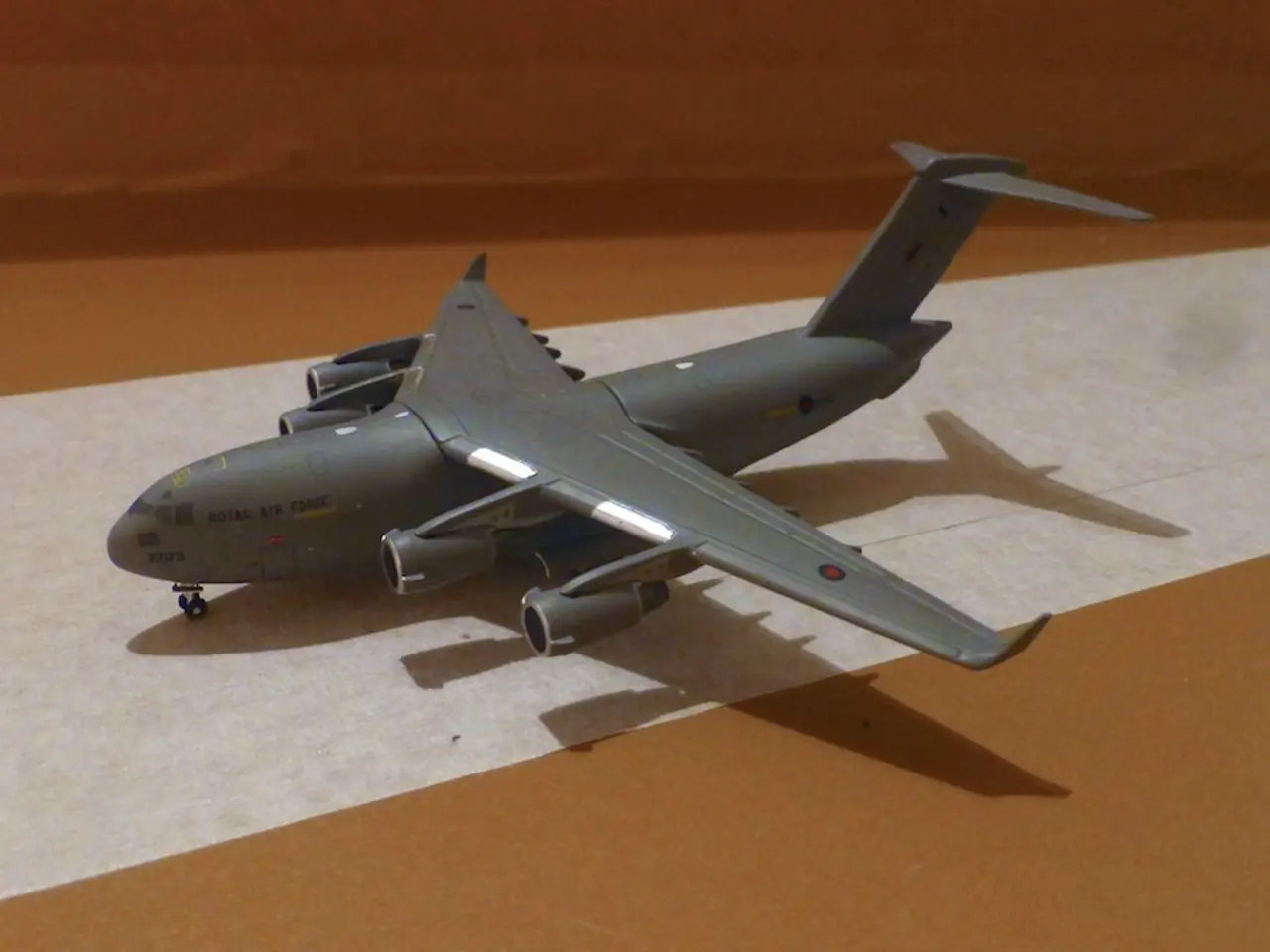Military Finances Innovative Wing Mounts for B-1 Bomber, Aiming for Enhanced Armaments and Hypersonic Test Pilot Programs
B-1B Bomber to Carry More Hypersonic Missiles with New External Pylons
The United States Air Force is equipping the B-1B Lancer bomber with new external weapons pylons, called Large Adaptable Modular (LAM) pylons, to significantly increase its capacity for standoff munitions, including hypersonic missiles.
The External Heavy-Stores Pylon program, funded with over $50 million in the FY2026 budget, aims to add six external pylons on each B-1B. Each pylon can carry two 2,000-pound bombs or one 5,000-pound-plus weapon, such as the AGM-158 JASSM, LRASM, or future hypersonic weapons.
These external pylons revive the B-1B’s six external hardpoints, which were originally designed to carry nuclear cruise missiles that became deactivated under arms control treaties. The Air Force is reactivating these pylons with modern capabilities to carry heavier, advanced conventional standoff weapons.
The upgrade addresses the B-1B’s internal bay limitations since its relatively small bomb bays restrict the number of long-range missiles it can carry internally. External pylons thus allow the bomber to carry a wider range of modern and future munitions at minimal cost.
This increased carriage capacity is part of a strategy to sustain and expand the B-1B’s combat effectiveness while transitioning to the new B-21 Raider bomber, acting as a hedge against potential B-21 deployment delays.
The new pylons enable the B-1B to conduct hypersonic missile testing by providing sufficient external carriage capacity, increasing the fleet's ability to test and deploy these advanced weapons systems. The Air Force is pursuing the development of at least two air-launched hypersonic missiles, including the AGM-183 Air-Launched Rapid Response Weapon (ARRW) and the Hypersonic Attack Cruise Missile (HACM).
The B-1 could also carry a combination of up to 144 Small Diameter Bombs (SDBs), with 48 externally and 96 internally, illustrating the loadout flexibility these pylons provide.
In summary, the new external pylons increase standoff munitions loadout on the B-1B from 24 to up to 36 missiles, enable carriage of hypersonic weapons, and extend the bomber’s operational relevance before B-21 arrival through enhanced weapons capacity and versatility.
[1] Air Force Magazine [2] Defense News [3] Breaking Defense [4] Aviation Week
- The Air Force's move to install large adaptable modular (LAM) pylons on B-1B Lancers will allow for the carrier of more hypersonic missiles, enhancing the air force's strategic capabilities in space and air warfare.
- The new pylons enable the B-1B to test and deploy air-launched hypersonic weapons such as the AGM-183 Air-Launched Rapid Response Weapon (ARRW) and the Hypersonic Attack Cruise Missile (HACM), expanding the air force's technology in hypersonic weapons systems.
- The Space Force may benefit from the B-1B's increased capacity for standoff munitions, including hypersonic missiles, as the development of these weapons could have implications for space security and defense.
- The external pylons' loadout flexibility allows the B-1B to carry a combination of traditional aircraft munitions like the Small Diameter Bombs (SDBs), as well as future hypersonic and advanced conventional weapons, maximizing the bomber's versatility across various mission profiles.




